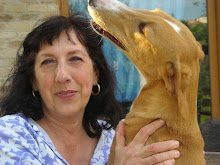Interessante articolo che riguarda gli Hortaya, parenti strettissimi dei Chart Polski con loro è stata ricreata la razza quando era a rischio di estinzione.......praticamente gli stessi, visto che le frontiere Ukraina- Polonia hanno fluttuato molto....ma shhhhhh
 pubblicato da Kathy Bentzoni in un gruppo sugli Hortaya-
pubblicato da Kathy Bentzoni in un gruppo sugli Hortaya-
Article from the bulletin " Sighthound News" of the "joint kennel" (?) Nevsky, August 1995. Introducing the Chortaya breed
by comformation judge L.V. Ponomareva
15 years experience of the breed Chortaya
Addition to the report from the 79th hunting dog show in St. Petersburg 1995
After analyzing again the judge's critiques given in the 79th show, I would like to draw attention of the Chortaya breeders to the somewhat twisted impression of this breed. Evidently, the breeders and judges of St. Petersburg prefer to see big, strong-boned, enormously muscled, very broad and deep-chested dogs. In other words something between a Chart Polski and a Greyhound. Yet the Chortaya has always been slimmer muscled than the athletic Greyhound. That is why a Chortaya is able to perform very speedy on shorter distances (although not as speedy as a Greyhound would). In addition it has the endurance to run for distances of many kilometers, several times a day and even day after day during a hunting season. By discarding the meager-muscled hounds we bring our own dogs closer to the Greyhound. Yet the best ( and I emphasize - THE BEST) of the hunting Greyhounds do not have the endurance for more than two runs within a short span, not to mention that after 6-8 hours walk they in general don't have the strength to run any more. That is why the Greyhound owners go hunting with them only every other day. It should be mentioned that according to the laws of biology the side-phenomenon of athletic muscling are the tendons are often of the weaker kind. As a result from this, even this working "intensive" (coursing every other day) the Greyhounds will get their legs cripples quite soon. It can happen that at the age of 4-5 years the dog may be limping each of his four legs. On the contrary a Chortaya hunts until 10-11 years of age, although being slightly slower in the later years but because of his skills, stil with satisfactory results. Big size and massive bones have other negative sides as well. Such dogs are difficult to raise, they grow up (mature?) slowly, start working late, and decay early. It takes a lot of work to maintain such dogs in working- or sporting condition. On the contrary, it is enough for a dog that is well taken care off and has a dry construction, a 6-8 hour daily outdoor recreation with proper spurts, 3-4 days in a row and 3 chases after a prey, enough rest - and the dog is ready to start a hunting season. For a big dog such practice is not enough, and besides, for it the exertion has to be added little by little to avoid any overexertion. Let us admit, that a very deep-chested and well muscled sighthound looks gorgeous, but a Chortaya is first and foremost a working dog and his greatest value has always considered to be using him for effective hunting. Therefore it is not right to to aim solely to a showy appearance. A harmonious construction, a dog with good angles and compact muscles required by his purpose, is always the best alternative. In addition to what has already been said, it should be mentioned that several local types have developed from a breed which is geographically distributed widely (it was proven long ago that Chortaya is a very old breed belonging to the group of oriental sighthounds, so that the statement that wanders from one publication to another and says it is a cross between a Greyhound and a Borzoi, is groundless and false). Of the said types the most numerous are the two extremities: the Rostov type - big, slightly rough in construction and looking modest; dogs of this type are usually endurance runners; and the Stavropol type - smallish, elegant, light - a swift runner. It would not be right to favor one type over the other. In other words, dogs representing their own types should get equal critique. While judging a dog, the defects in the construction should be noted and not which breed type it represents. These days there is reason to adopt a cautious attitude towards the extremely deep-chested and imposingly muscled dogs, because in Ukraine, in practice everywhere in Rostov area and in Pyatigorsk kennel center in Stavropol area it is common to cross Greyhound with Chortaya and it is not even mentioned in the litter's pedigree. Crossing the greyhound, which belongs to the Western sighthounds, with the Chortaya (especially in larger scale), may shake the Chortaya genetic heritage (genotype?) and may ultimately lead into both losing the hunting characters and the whole breed. It must be admitted that the first generation after the cross are downright phenomenal hunters, but they are still "sighthound broilers". They have no breeding value whatsoever. In fact they are downright dangerous. The Chortayas of St. Petersburg are all big, and tendons of some specimen could be better. Therefore there is reason to adopt a positive attitude to the hounds that are well constructed, are well cared for in their outer appearance, have musculature that is according to their purpose and that have wiry tendons.-------due razze che sono molto diverse sia fisicamente che mentalmente, assurdo incrociarle
